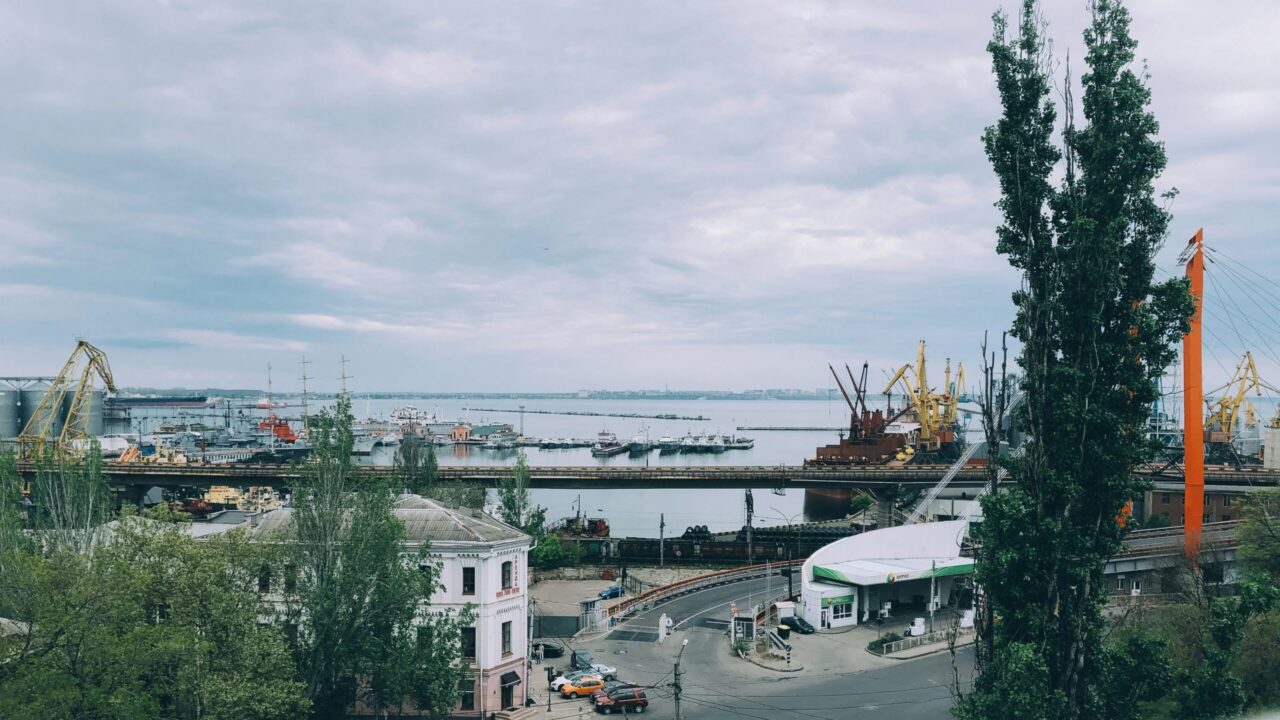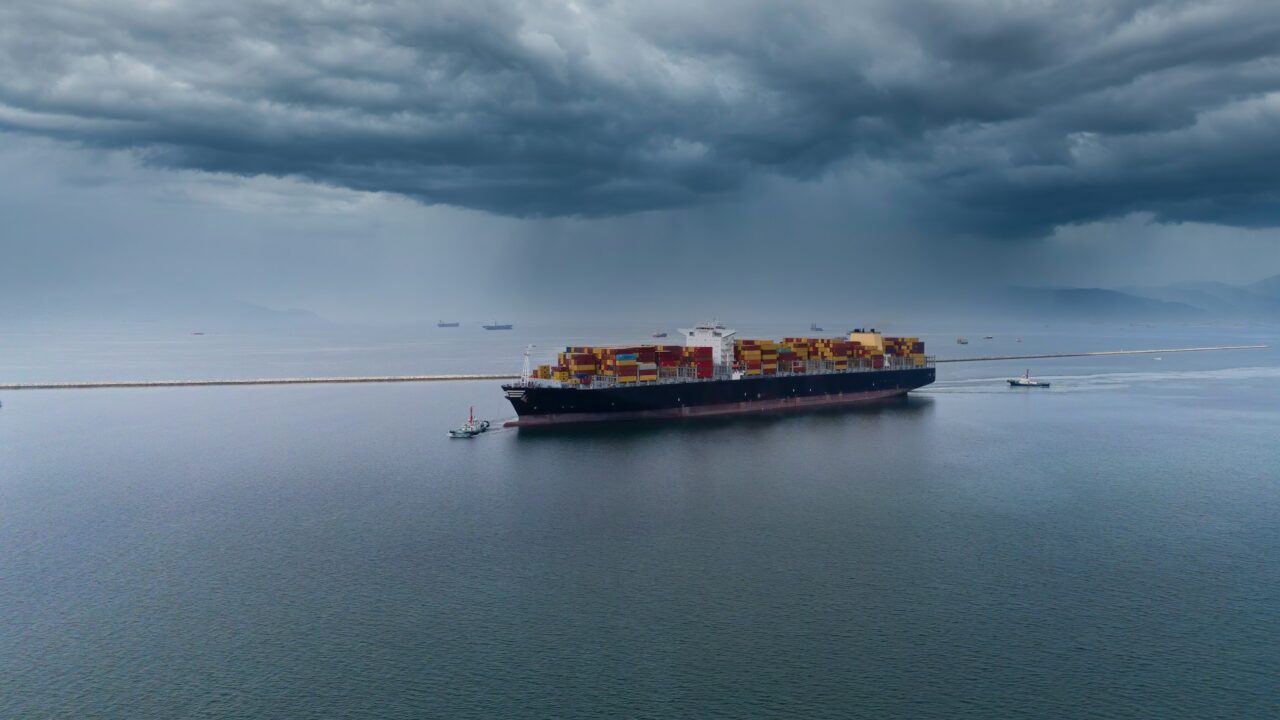The likelihood of war in the Baltic Sea remains low – but this should not prevent us from being prepared. Ukraine’s maritime traffic differs considerably from that of the Baltic region, and its measures cannot be directly replicated. Nonetheless, Ukraine’s experience illustrates that there is no single blueprint for managing the risks of maritime warfare. With a combination of approaches, supply chains can be kept at least partially operational, even under extreme circumstances.
Russia’s full-scale invasion of Ukraine in February 2022 had a profound impact on the country’s maritime transport. While much of Ukraine’s shipping data has not been publicly available since 2021, insights can still be gleaned from a range of reports and online sources. This article examines how Ukraine’s seaborne foreign trade has weathered the war – without delving into the military operations themselves.
The likelihood of war in the Baltic Sea remains low – but this should not prevent us from being prepared.

The port of Odessa. Photo: Tetiana Shevereva/Unsplash.
Ukraine as a maritime nation before the war
Prior to the war, Ukraine’s maritime transport was primarily focused on the export of grain and ore. The majority of other foreign trade was handled by road and rail – with road transport being the most significant in terms of the value of goods.
In 2021, Ukrainian ports processed a total of 153 million tonnes of cargo, and roughly 10,000 vessels called at the country’s harbours. About three-quarters of these were dry bulk carriers transporting maize, wheat, iron ore and steel. Container ships and ro-ro vessels each accounted for only around seven per cent of the total ship calls.
Ukraine’s own merchant fleet has remained modest in size relative to its foreign trade volumes. Both before and during the war, most Ukrainian maritime traffic has been conducted by vessels flying flags of convenience – such as Liberia, Panama, the Marshall Islands, and Malta.
Maritime traffic during the war
Russia’s invasion in late February 2022 caused a near-total standstill in Ukrainian maritime traffic, with much of the cargo trade swiftly diverted to rail and road. Small-vessel activity to Danube ports quickly increased.
During the war, approximately 40 merchant vessels have been damaged. The most intense phase of attacks on shipping occurred during the first two months of the conflict. Since then, naval activity has been comparatively subdued, though missile strikes on Ukrainian ports intensified briefly in autumn 2024 and again in March 2025. Floating naval mines have also been discovered in the Black Sea, particularly in Ukrainian waters.
Maritime traffic to Ukrainian seaports resumed following the launch of the Black Sea Grain Initiative in July 2022. When Russia withdrew from the agreement in late July 2023, port traffic halted again for several months. By the end of 2023, however, shipping resumed via a protected corridor along the Romanian coast.
In 2022 and 2023, Ukrainian ports handled around 60 million tonnes of cargo – approximately 40 per cent of pre-war volumes. By 2024, this figure had increased to nearly 100 million tonnes, or 65 per cent of previous levels. Container and ro-ro traffic, however, has remained virtually non-existent since the onset of the war.
In March 2022, the sea areas surrounding both Ukraine and Russia were designated as war risk zones, leading to a sharp rise in insurance premiums for vessels operating in the region. Given Ukraine’s status as a key global grain exporter, major marine insurers have since autumn 2023 offered war risk cover for ships and cargo at more affordable – though still elevated – rates.
Given Ukraine’s status as a key global grain exporter, major marine insurers have since autumn 2023 offered war risk cover for ships and cargo at more affordable – though still elevated – rates.

Since the end of 2023, Ukrainian maritime transport has been directed through a protected corridor along the Romanian coast. The image is illustrative. Photo: Getty/Unsplash.
How has merchant shipping continued in a country at war?
The resilience of Ukraine’s commercial shipping sector can be attributed to five key factors:
- Diversion to foreign ports: Since May 2022, Ukraine has transported grain via rail, road and barge to Romania’s Danube ports and the Black Sea port of Constanța.
- Diplomatic agreements: The Black Sea Grain Initiative, active from July 2022 to July 2023, enabled maritime traffic with Russian consent.
- Use of foreign territorial waters: Since August 2024, Ukrainian exports have sailed within the territorial waters of Romania and Bulgaria along the coast.
- Robust infrastructure: Despite sustained missile and drone attacks, Ukraine’s port infrastructure has largely remained functional.
- Viable insurance options: Since autumn 2023, foreign marine insurers have provided war risk cover at comparatively reasonable rates.
In practical terms, Ukrainian businesses have adapted to wartime logistics by employing alternative routes (foreign ports, Danube routes, road networks), recruiting foreign drivers, and – most importantly – maintaining an ongoing search for viable transport solutions.




